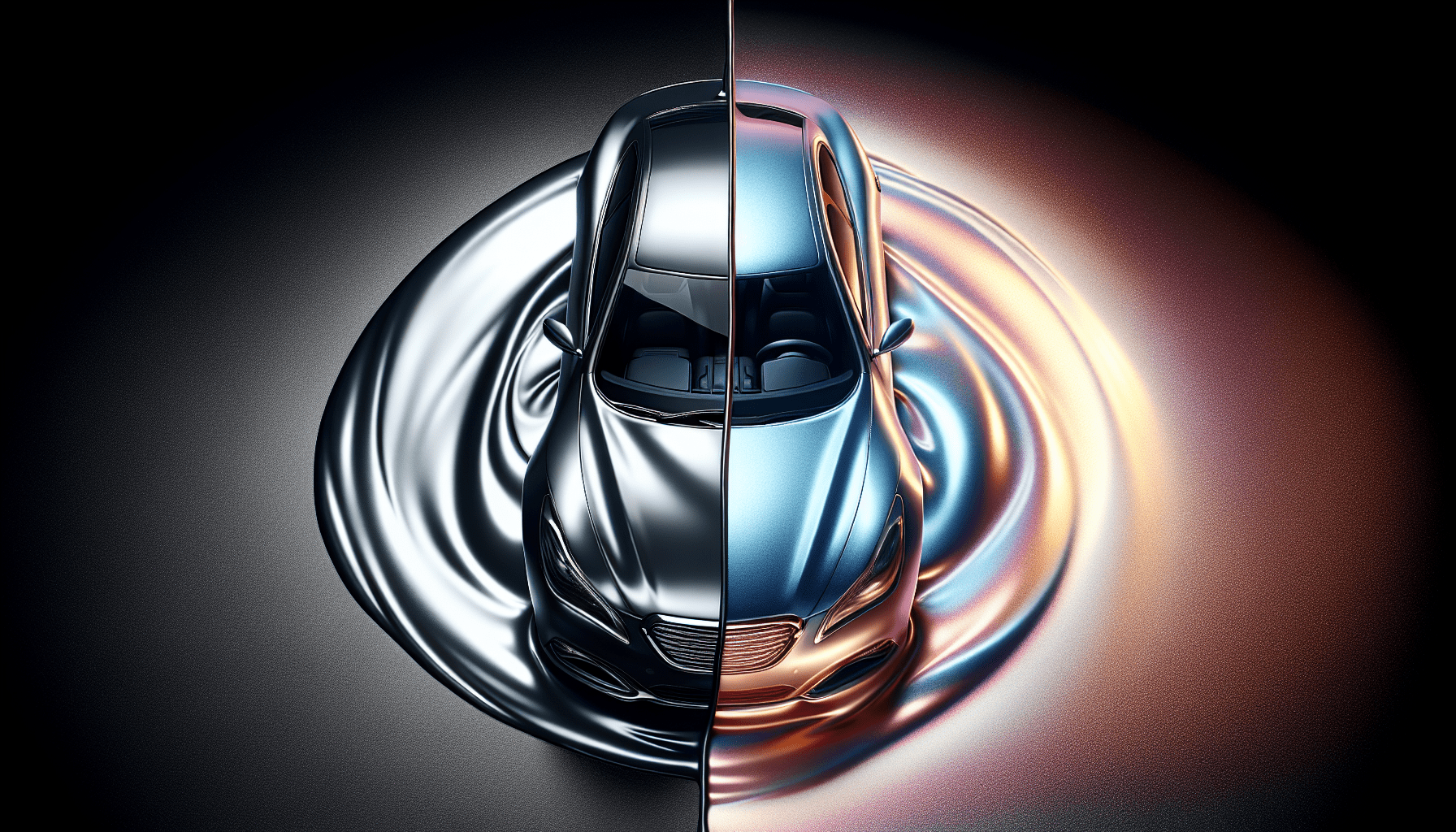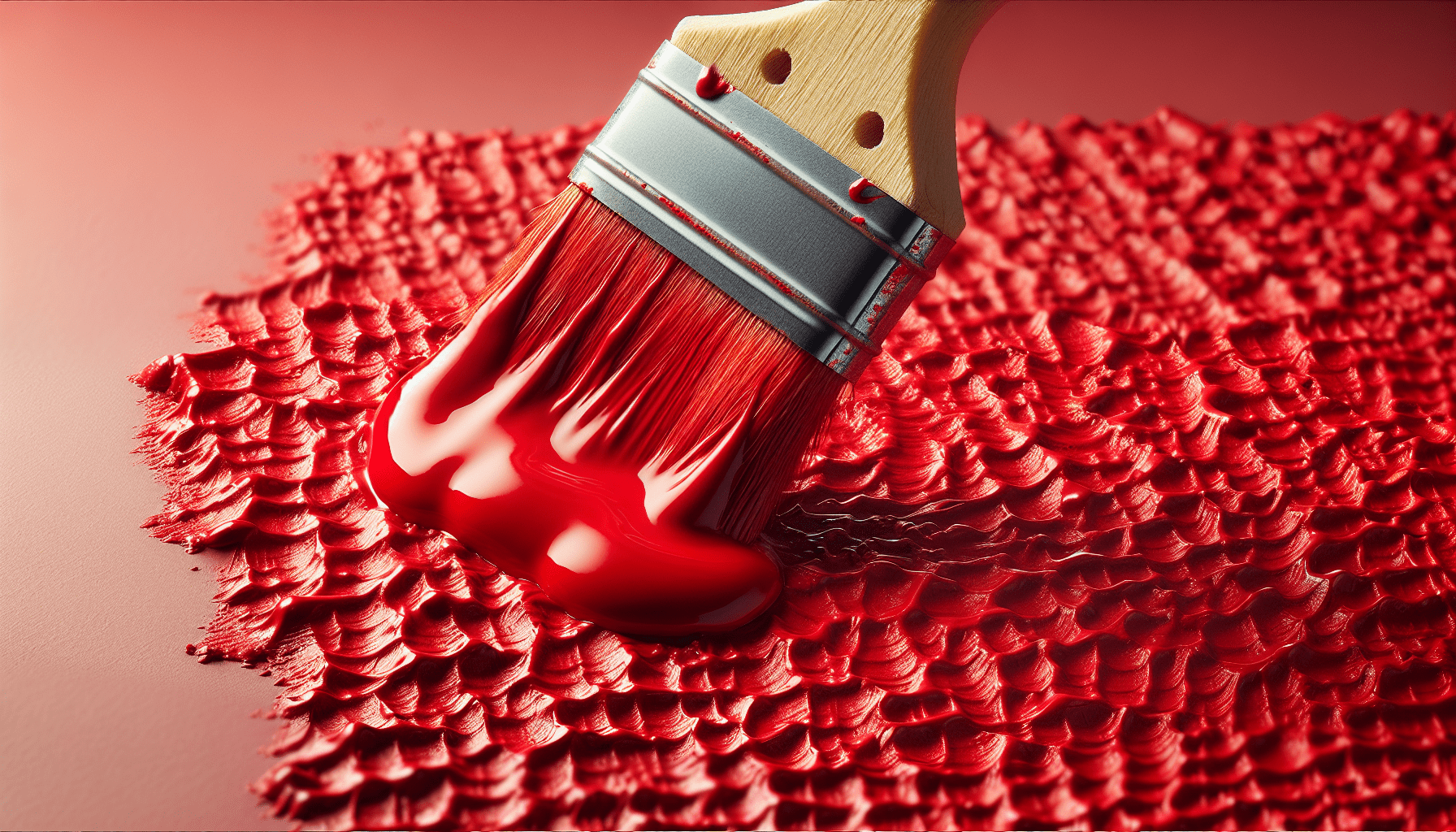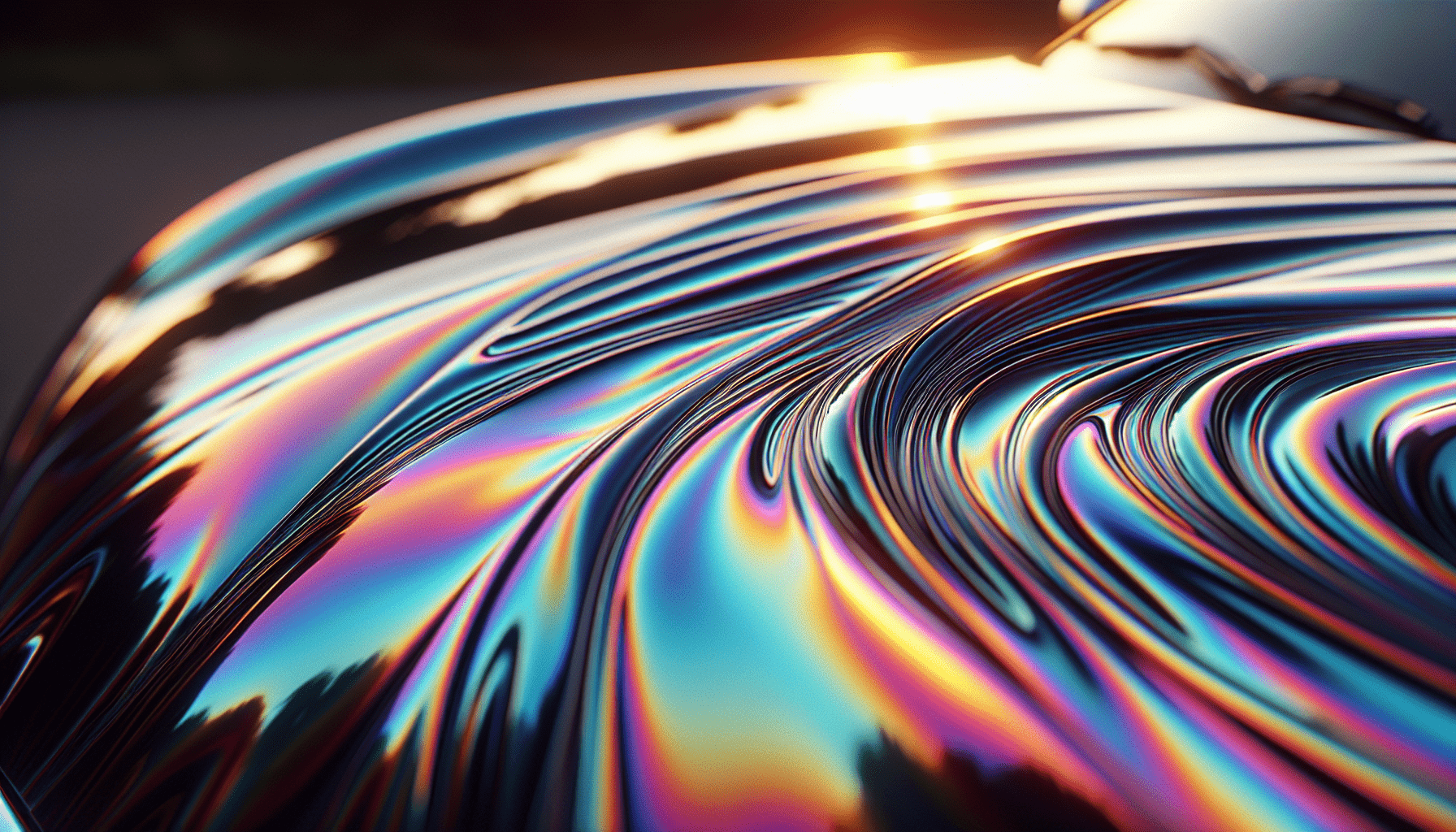Have you ever wondered what sets metallic paint apart from pearlescent paint? Understanding the intricacies of automotive paint can help you make an informed decision on which type to use for your vehicle. This article aims to provide a comprehensive comparison between metallic and pearlescent paint, focusing on their composition, appearance, cost, maintenance, and application procedures.
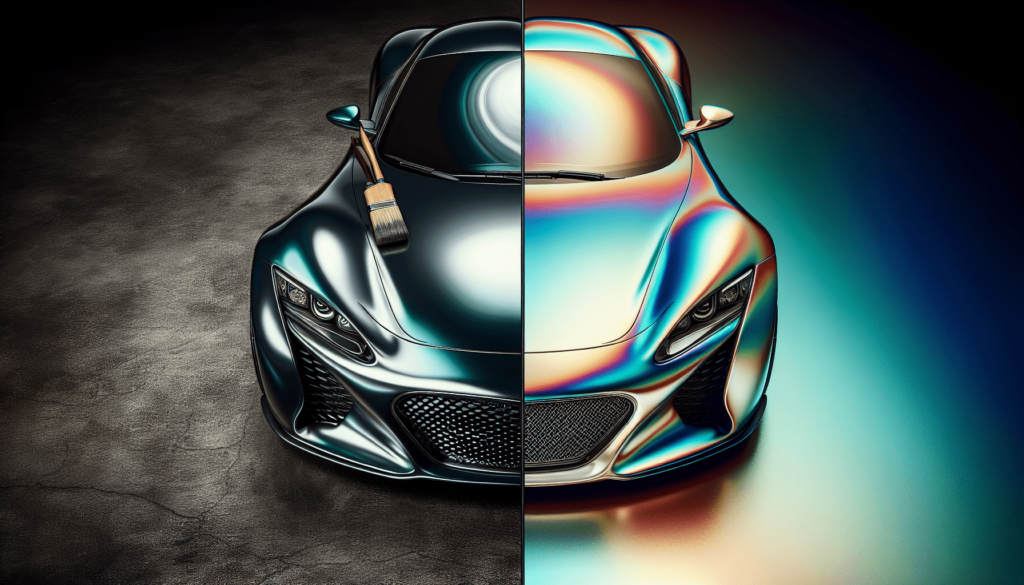
What is Metallic Paint?
Composition
Metallic paint, as the name suggests, contains tiny metallic particles, usually aluminum or other metal flakes. These particles reflect light, creating a shimmering finish. The base paint is typically mixed with a clear coat to enhance durability and gloss.
Appearance
Metallic paint presents a lustrous, reflective look that can make a car appear more dynamic and visually striking. Depending on the size and density of the metal flakes, the paint can give off a subtle sparkle or a more pronounced glittery effect. This type of paint is often favored for sports cars and high-end vehicles to convey a sense of speed and sophistication.
Cost
Metallic paint tends to be more expensive than standard solid or flat paints but is generally more affordable than pearlescent paint. The cost can vary significantly depending on the brand, quality, and the specific blend of metallic particles used.
Maintenance
Maintaining a metallic paint finish can be a bit challenging. Scratches and swirls can be more visible due to the reflective nature of the metallic particles. It is essential to use the proper washing and waxing techniques to preserve the paint’s condition.
Application Procedures
Applying metallic paint requires skill and precision. The paint job typically involves multiple layers: a primer, a base coat, the metallic coat, and a protective clear coat. It’s crucial to ensure that the metallic particles are evenly distributed to avoid blotchy or uneven areas.
What is Pearlescent Paint?
Composition
Pearlescent paint contains mica or ceramic crystals instead of metal flakes. These crystals refract light rather than merely reflecting it, creating a multi-dimensional, iridescent effect. Similar to metallic paint, pearlescent paint also includes a base color mixed with a clear coat for added protection.
Appearance
The most striking feature of pearlescent paint is its ability to change colors when viewed from different angles. This chameleon-like quality makes pearlescent paint highly appealing for those who want a unique and eye-catching finish. The depth and complexity of the color can give the vehicle an exotic and luxurious appearance.
Cost
Pearlescent paint is generally more expensive than metallic paint. The high cost can be attributed to the specialized materials involved and the extra labor required for a flawless finish. Custom colors and specific blends can drive the price even higher.
Maintenance
Maintaining a pearlescent finish can be even more demanding than metallic paint. The multi-layered structure and the refraction properties make scratches, chips, and swirls more noticeable. A meticulous maintenance routine is essential to keep the paint looking its best.
Application Procedures
Applying pearlescent paint is a complicated process that requires professional expertise. The procedure often involves several layers: a primer, a base coat, the pearlescent coat, and a protective clear coat. Achieving an even distribution of the mica or ceramic crystals is critical to avoid inconsistencies in color and sheen.
Detailed Comparison
Composition and Materials
| Aspect | Metallic Paint | Pearlescent Paint |
|---|---|---|
| Primary Particles | Metal flakes (usually aluminum) | Mica or ceramic crystals |
| Light Interaction | Reflects light | Refracts light |
| Base Paint | Mixed with a clear coat | Mixed with a clear coat |
Appearance and Visual Effects
| Aspect | Metallic Paint | Pearlescent Paint |
|---|---|---|
| Visual Effect | Shimmering, reflective finish | Iridescent, color-changing effect |
| Common Use | Sports cars, high-end vehicles | Exotic, luxury cars |
| Depth of Color | Moderate | High |
Cost Factors
| Aspect | Metallic Paint | Pearlescent Paint |
|---|---|---|
| Average Cost | Moderate | High |
| Customization | Moderately costly | Very costly |
| Overall Expense | Varies by brand and quality | Higher due to materials and labor |
Maintenance Requirements
| Aspect | Metallic Paint | Pearlescent Paint |
|---|---|---|
| Visibility of Damage | Moderate | High |
| Washing Technique | Standard | Standard |
| Special Care | Required for longevity | Essential for maintaining finish |
Application Techniques
| Aspect | Metallic Paint | Pearlescent Paint |
|---|---|---|
| Number of Layers | Multiple (primer, base, metallic, clear) | Multiple (primer, base, pearlescent, clear) |
| Skill Level | High | Very high |
| Potential Issues | Uneven metallic distribution | Inconsistent crystal distribution |
Durability and Longevity
Both metallic and pearlescent paints offer good durability, but their lifespans can vary depending on environmental factors and care routines. Generally, both types of paint offer years of visual appeal if maintained correctly.
Environmental Impact
Due to the inclusion of synthetic materials and chemicals, both metallic and pearlescent paints can have an environmental footprint. Proper disposal and recycling of leftover paint and containers are essential to minimize environmental harm.
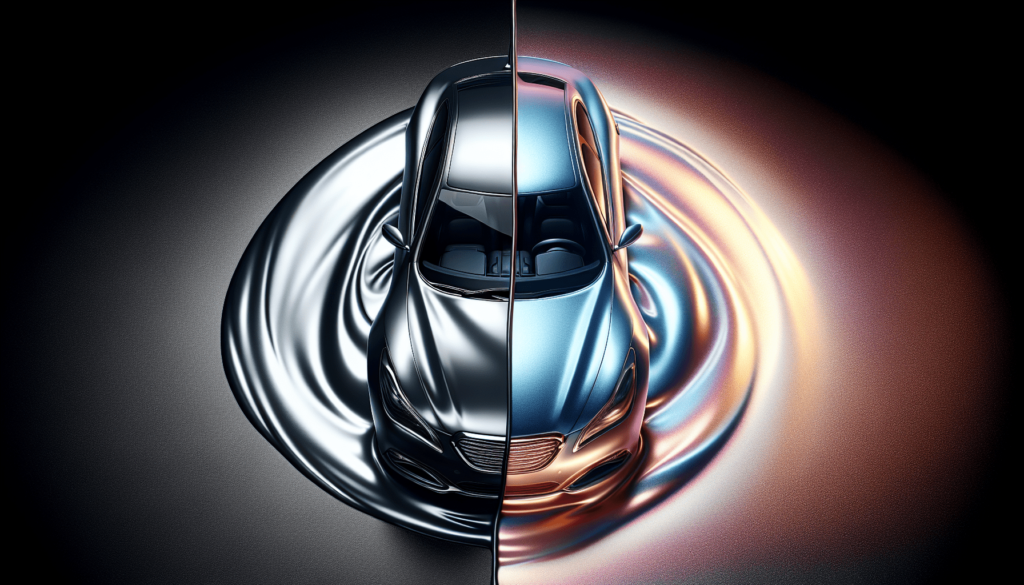
When to Choose Metallic Paint
Metallic paint may be the right choice if you prefer a paint with a striking, reflective appearance without breaking the bank. It’s particularly suited for sporty or high-end vehicles that aim to project a sense of speed and luxury.
When to Choose Pearlescent Paint
Pearlescent paint is ideal for those seeking a unique, iridescent finish that changes color depending on the viewing angle. This type of paint is often used on luxury and exotic cars where cost is less of a concern and the focus is on achieving an unparalleled visual impact.
How to Maintain Your Paint Finish
- Washing: Use a pH-balanced car shampoo and a microfiber wash mitt.
- Drying: Utilize a microfiber towel to avoid scratches.
- Polishing: Remove minor imperfections and restore gloss.
- Waxing: Apply a quality car wax to add a protective layer.
- Paint Protection Films: Consider applying a paint protection film to shield against environmental damage.
Common Mistakes in Maintaining Paint
- Using Dish Soap: Avoid using dish soap as it can strip protective layers.
- Ignoring Bird Droppings: Quickly clean off bird droppings to prevent acid damage.
- Automatic Car Washes: Steer clear of abrasive brushes used in automatic car washes.
Professional Detailing
For the best results, consider professional detailing services, which can provide advanced treatments such as ceramic coatings and paint correction.
Conclusion
Understanding the difference between metallic and pearlescent paint can help you make an informed choice for your vehicle. While metallic paint offers a shimmering, reflective appearance, pearlescent paint provides an iridescent, color-changing effect. Both require careful maintenance and skilled application. Whether you’re looking for a more affordable yet striking finish or a luxurious, eye-catching look, there’s a paint option to suit your needs.
